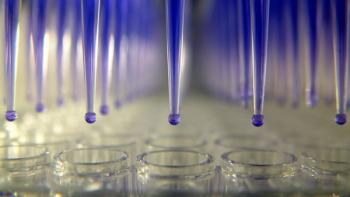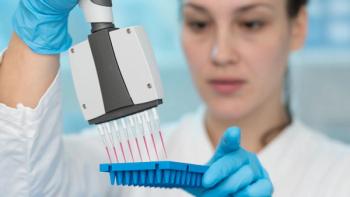
- BioPharm International-12-01-2015
- Volume 28
- Issue 12
Rapid Mycoplasma Testing: Meeting the Burden of Proof
Expectations are high for rapid testing methods, but demonstration of comparability proves challenging.
Mycoplasma contamination of biopharmaceutical processes and drug substances, typically through the use of contaminated raw materials or human contact, is generally not readily apparent but can affect cell growth and activity (cell metabolism and gene expression), and some species are pathogenic. Routine analysis of raw materials, monitoring of bioprocesses, and testing of final product lots for mycoplasma is thus required by regulatory agencies.
There are more than 200 known species (class Mollicutes) of these tiny (< 1 µm in diameter) bacteria that lack cell walls. The gold standard assay involves direct cell culture in complex media enriched with growth factors, often in combination with an indirect culture/staining method to detect fastidious mycoplasma species that do not grow in broth and agar. The method is highly effective, but lengthy (28-35 days) and labor-intensive, resulting in longer production times and increased risk. It is also inappropriate for unstable cell therapy treatments.
Several rapid mycoplasma test kits based on nucleic acid amplification and other techniques are commercially available for use in research labs, and some are also claimed to be effective for commercial biopharmaceutical manufacturing (raw material analysis, cell line qualification, in-process monitoring, and product release). Use of these methods is limited in practice, however, due to the challenges associated with demonstrating comparability to compendial methods.
Recognized need
The length of standard mycoplasma culture methods can be problematic for biopharmaceutical manufacturers on a number of levels. The long times for raw material testing and cell line qualification delay the start of production processes. Lengthy assay times for lot release extend the time it takes to get products available to patients.
For products that have short shelf lives measured in hours or days, such as patient-specific autologous cell therapy products, lengthy methods are inappropriate, and there is a strong argument that the use of rapid methods will lead to increased product and patient safety, according to John Duguid, director of process development for Vericel Corporation. In addition, cell-culture methods cannot be used for some viral vaccines, and thus alternative methods are necessary. For products where expiry or reactivity are not a concern, Duguid notes that the decision to implement a rapid method is generally driven by an assessment of the return on investment needed for purchase, development, validation, and implementation.
With respect to process monitoring, risk is increased as the result of lengthy assay times. If contamination is detected, all material processed during that assay time is lost, and the delivery of the formulated product to the patient may be delayed. “More timely access to analytical results can significantly improve the decision-making process and minimize any necessary downtime for investigation of the contamination source and need for cleaning and revalidation of equipment,” says Garry Takle, executive director of vaccines and biologics commercialization with Merck.
Hurdles to clear
Despite the clear benefits of rapid mycoplasma tests and the encouragement of their use by regulatory agencies, several significant hurdles remain to be cleared before they are widely adopted for biopharmaceutical manufacturing. First, Duguid stresses, regulatory agencies require extensive validation packages to support use of alternative methods. Alternative methods must provide comparable or better sensitivities and breadth of detection of mycoplasma species when compared to the standard cell-culture method. Parameters including accuracy, precision, specificity, the detection limits, operational range/sample volume, robustness, repeatability, and intermediate precision must be evaluated.
“The validation expectations of regulatory agencies for alternative rapid mycoplasma testing are very high but quite clear,” asserts Takle. He recommends that any companies developing rapid testing methods for US approvals communicate with FDA early on. “Representatives at the agency are very knowledgeable about mycoplasma testing and accessible, through involvement in consortia or other industry organizations such as the Parenteral Drug Association (PDA), and should be considered a valuable resource,” he adds.
Rapid methods should also be easy to use and allow for significantly faster turnaround times, all at a lower cost than the conventional method. That can be a challenge, according to Duguid, because often rapid methods with detection platforms different from conventional methodology require both analysts and reviewers to have specialized expertise. Most current tests are nucleic acid tests (NATs)--mainly based on the polymerase chain reaction (PCR)--and require expertise in molecular biology techniques. DNA-binding with fluorescence is another example. Biochemical (enzyme assays, enzyme-linked immunosorbent assays [ELISA], and cell-surface receptor detection), mass spectrometry, and immunological techniques (detection of specific antibody-antigen interactions) have also been developed.
Changes in process conditions can also impact many rapid test methods. The performance of a PCR-based method may, for instance, be affected by changes in the composition of the cell culture media or increases in sample cell mass. Validation requirements also differ for different testing applications. For instance, when a test is to be used as a complementary test for in-process monitoring, demonstration of comparability may not be necessary, while a comparability study is required if the rapid method will be replacing an official method for lot release. In addition, NATs can be destructive testing methods, and thus the use of orthogonal methods may be precluded, according to Duguid.
Finally, demonstration of comparability generally involves conducting parallel rapid and conventional cell-culture assays using the same sample. Such tests are not possible in many facilities that manufacture cell-based therapies because the use of viable mycoplasma cultures is prohibited. In these cases, Duguid notes that performance of the assays required to demonstrate equivalence to the conventional methodology must be outsourced to a qualified testing laboratory, which may further complicate the method development, validation, and technology transfer processes.
The importance of sample preparation and test protocols
Rapid PCR-based mycoplasma testing methods were first introduced in the 1980s and are the most common assays being investigated today. “PCR is a very well-understood technology that is used in other approved assays, and it meets all of the important criteria for rapid mycoplasma testing,” Takle observes.
Several different PCR techniques have been employed for the development of rapid mycoplasma methods, including real-time PCR, touchdown PCR, transcription mediated amplification, microarrays, and hybrids with a growth step prior to PCR. In addition to providing adequate specificity and sensitivity, some rapid tests also offer quantitation and identification. The latter take longer--up to 7 days--and are, therefore, not appropriate for applications where a very rapid turnaround is required, but are suitable in applications where other longer-term testing is necessary, such as 14-day sterility testing for bacteria and fungi.
Regardless of the specific PCR technique, successful testing cannot be accomplished without careful sample preparation and proper protocols, according to Takle. Unlike culture-based methods, which only detect viable organisms, NATs detect all nucleic acids from viable, non-viable, and lysed organisms. The presence of nucleic acid from sources other than viable organisms can lead to false-positive results.
One potential way to avoid this issue is to develop methods based on RNA, rather than DNA, detection because only organisms undergoing protein synthesis will be identified. Even with this approach, proper sample preparation and rigorous testing protocols that include appropriate measures for the prevention of DNA contamination are a necessity. An initial culture step can also help in some cases to identify viable organisms. “False positives pose equal risk for the manufacturer, because it is very difficult to provide evidence that an initial positive result was actually false,” says Takle.
False negatives, on the other hand, present a risk to patients and are of greatest concern to regulatory agencies. This concern is alleviated by ensuring that the rapid mycoplasma method has the necessary level of sensitivity for a wide range of mycoplasma species. The preparation and characterization of quality mycoplasma stock samples for determination of comparability is crucial for successfully achieving this goal. Details are outlined in the World Health Organization International Standard to Harmonize Assays for Detection of Mycoplasma DNA (1).
Similar adoption rate expected going forward
The adoption of rapid mycoplasma testing for biopharmaceutical manufacturing is expected to continue at the slow rate observed in recent years. To date, only a handful or so (6-12) methods have been approved, and mainly for new products, according to Takle. He expects, though, that as more new biologic drug products are approved with rapid mycoplasma testing as part of their filings, the number of methods used in the industry will increase, even for existing products.
“Because the compendia method takes so long, most biopharmaceutical companies are investigating the potential of rapid mycoplasma testing in some form for various applications. It will take longer for implementation of these newer methods for existing products, though, because the expectations for demonstrating comparability are very high,” Takle explains.
Advances in PCR technology are helping as well. The panels of mycoplasma organisms that can be detected with PCR continue to expand, and improvements in PCR reagents have led to improvements in the sensitivity, accuracy, and robustness of many rapid mycoplasma methods, according to Takle. He also notes that many newer methods have been designed specifically to address ease-of-use issues. The more effective automation of sample preparation steps has also been important. “These advances have significantly reduced the amount of hand-on time required to perform some rapid tests,” comments Duguid.
Biopharma weighs in-house vs. uutsourced mycoplasma testing
A number of testing labs now offer rapid mycoplasma PCR testing services, but in general, larger biopharmaceutical manufacturers tend to prefer to keep this testing in-house at present. “Since both false-positive and false-negative results can have far-reaching impacts, companies with the resources to do their own rapid mycoplasma testing often do so to retain control over the process,” Takle comments. As rapid mycoplasma testing becomes more commonplace and both manufacturers and testing labs gain more experience with these methods, he expects that outsourcing will likely increase.
Merck is currently investigating the use of rapid mycoplasma testing for new products and is also looking at its application for some existing products. Vericel uses nucleic acid-based rapid mycoplasma testing for raw material testing, in-process testing, and final product release testing of autologous cell therapy products, and has validated and implemented a rapid mycoplasma test for an autologous cell therapy approved for marketing in Europe. This test will likely also be included with future US regulatory submissions.
Reference
1. M. Nübling et al., Appl. Environ. Microbiol. 81(17), pp. 5694-702.
About the Author
Cynthia A. Challener, PhD. Is a contributing editor to BioPharm International.
Article DetailsBioPharm International
Vol. 28, No. 12
Pages: 56–58
Citation: When referring to this article, please cite it as C. Challener, " Rapid Mycoplasma Testing: Meeting the Burden of Proof," BioPharm International28 (12) 2015.
Articles in this issue
almost 10 years ago
Bespoke Bioprocessing Resinsalmost 10 years ago
New Drugs and New Initiatives Shaped 2015almost 10 years ago
CMO Investors Have More Money Than Places to Spend Italmost 10 years ago
N-Glycan Composition Profiling for Quality Testing of Biotherapeuticsalmost 10 years ago
Greener Pastures in Biologics?almost 10 years ago
GMP Challenges for Advanced Therapy Medicinal Productsalmost 10 years ago
Moving Up the Biopharma Career LadderNewsletter
Stay at the forefront of biopharmaceutical innovation—subscribe to BioPharm International for expert insights on drug development, manufacturing, compliance, and more.





